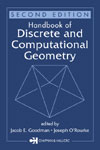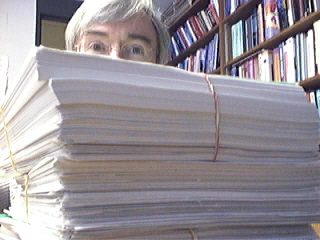Handbook of Discrete and Computational Geometry (original) (raw)
 |
 |
|---|---|
| Cover | Late stages of proofreading :-) |
Handbook of Discrete and Computational Geometry, Second Edition
J. E. Goodman and J. O'Rourke, editors
CRC Press LLC, Boca Raton, FL; Second Edition, April 2004.
65 chapters, xvii + 1539 pages. Third Edition, Oct 2017. 1937 pages.
ISBN: 1584883014; $139.95: CRC Press, Amazon.com
From the Jacket Description
The second edition of the Handbook of Discrete and Computational Geometry is a thoroughly revised version of the bestselling first edition. With the addition of 500 pages and 14 new chapters covering topics such as geometric graphs, collision detection, clustering, applications of computational geometry, and statistical applications, this is a significant update. This edition includes expanded coverage on the topics of mesh generation in two and three dimensions, aspect graphs, center points, and probabilistic roadmap algorithms. It also features new results on solutions of the Kepler conjecture, and honeycomb conjecture, new bounds on _k_-sets, and new results on face numbers of polytopes.
- Provides a one-stop reference both for researchers in geometry and geometric computing and for professionals who use geometric tools in their work
- Covers a broad range of topics in discrete and computational geometry as well as numerous applications.
- Presents results in the forms of theorems, algorithms, and tables.
- Addresses many important new developments in the field, including solution of the Kepler conjecture, results on the 2-center problem, new bounds on k-sets and geometric permutations, and new art gallery theorems.
- Includes nearly 300 illustrations, almost 200 tables, and glossaries that provide clear definitions of more than 4000 terms.
- Thirteen new chapters: Five on applications and others on collision detection, nearest neighbors in high-dimensional spaces, curve and surface reconstruction, embeddings of finite metric spaces, polygonal linkages, the discrepancy method, and geometric graph theory.
- Thorough revisions of all remaining chapters.
- Extended coverage of computational geometry software, now comprising two chapters:
- one on the LEDA and CGAL libraries,
- the other on additional software.
- Two indices:
- An Index of Defined Terms and
- an Index of Cited Authors
- Greatly expanded bibliographies.